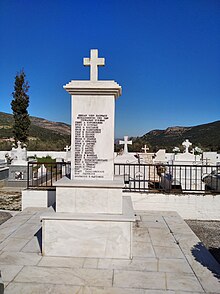
Back لافتة تاريخية Arabic Мемарыяльная дошка Byelorussian Паметна плоча Bulgarian Placa commemorativa Catalan Pamětní deska Czech Plakette Danish Gedenktafel German Memortabulo Esperanto Placa conmemorativa Spanish Mälestustahvel Estonian





A commemorative plaque, or simply plaque, or in other places referred to as a historical marker, historic marker, or historic plaque, is a plate of metal, ceramic, stone, wood, or other material, typically attached to a wall, stone, or other vertical surface, and bearing text or an image in relief, or both, to commemorate one or more persons, an event, a former use of the place, or some other thing. Many modern plaques and markers are used to associate the location where the plaque or marker is installed with the person, event, or item commemorated as a place worthy of visit.[1] A monumental plaque or tablet commemorating a deceased person or persons, can be a simple form of church monument. Most modern plaques affixed in this way are commemorative of something, but this is not always the case, and there are purely religious plaques, or those signifying ownership or affiliation of some sort. A plaquette is a small plaque, but in English, unlike many European languages, the term is not typically used for outdoor plaques fixed to walls.
- ^ "Historic Markers Across Georgia". Latitude 34 North. Archived from the original on 24 December 2013. Retrieved 31 October 2008.
© MMXXIII Rich X Search. We shall prevail. All rights reserved. Rich X Search